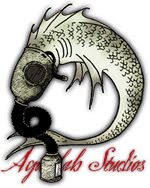In 1565, Holland's Peter Breugel painted "Hunters in the Snow" and another work depicting scenes resembling modern curling. Breugel's paintings support the premise held by some that curling originated in continental Europe. The Scots, however, are the undisputed developers and formalizers of the modern game. By 1638 curling was considered, with golf and archery (in M. H. Adamson's poem The Muses Threnodie), to be a usual recreational pastime and just as mind-numbingly as boring as golf and archery. After a huge growth spurt in the 19th century, curling was played by thousands in nearly every Scottish parish.
The origin of the so called sport is actually believed to have started by a dispute between two brothers living on opposite sides of a lake from one another. Though the argument today is widely debated, some believe that it was a disagreement about toast that grew out of hand, and ended finally one winter when both brothers tried to kill one another by throwing rocks. Having both lost their footing on the ice, the battle continued with the brothers, prone on the ice, attemptiing to brain one another using any rock withing reach and sliding them albeit slowly across the lake. Word reached the town, and by the time the folk made it to the lake the fighting was over. They were witness to the brother's wives on the ice, using brooms to gather pieces of cranium and brain matter....thus the sport of curling was born!
Between the 16th and 20th centuries, Scotland's climate warmed, and today the lochs rarely freeze. The climate change hindered curlers, who tried to kill one another outdoors on natural ice until the 20th century. Nonetheless the Scots had, by the mid-1800s, formalized curling's rules of play and equipment and had established the "mother club" of curlers worldwide, the Royal Caledonian Curling and Competative Crotcheting Club. The RCCCCC is today the national governing body of curling in Scotland, with 20,000 active members now playing indoors on refrigerated ice, or crotcheting cute little hats for one another near a fireplace at home.
The game of curling spread throughout the world through the efforts of thousands of Scottish soldiers and migrs settling their toast disputes at any body of frozen water that they could find. In North America, curling's origins likely date to the late 1700s. The first documented record is the founding of the Montreal Curling Club in 1807, who were the first to use curling to settle and argument originating somehow from Canadian Bacon.
In 1832, the Orchard Lake Curling Club, near Orchard Lake (makes sense, doesn't it?), became the first curling club in the United States, organized at the home of Dr. Robert Burns. The Orchard Lake group curled on Lake St. Clair, fifty miles away....why they did that is still a mystery that historians all agree is not worth investigating. The oldest continuously operating curling club in the United States is the Milwaukee, Wisconsin club, founded in 1845. The Scottish founders' roster included such names as Murray, Ferguson, Dunlop, Gunyon, Findlay, Kinney, McFarland and McFadyen.
The ice sport of curling, although never well known in the United States, has developed steadily throughout American history. The sport is often passed down through families and has provided enjoyable winter recreation and brain trauma to thousands of Americans.



No comments:
Post a Comment